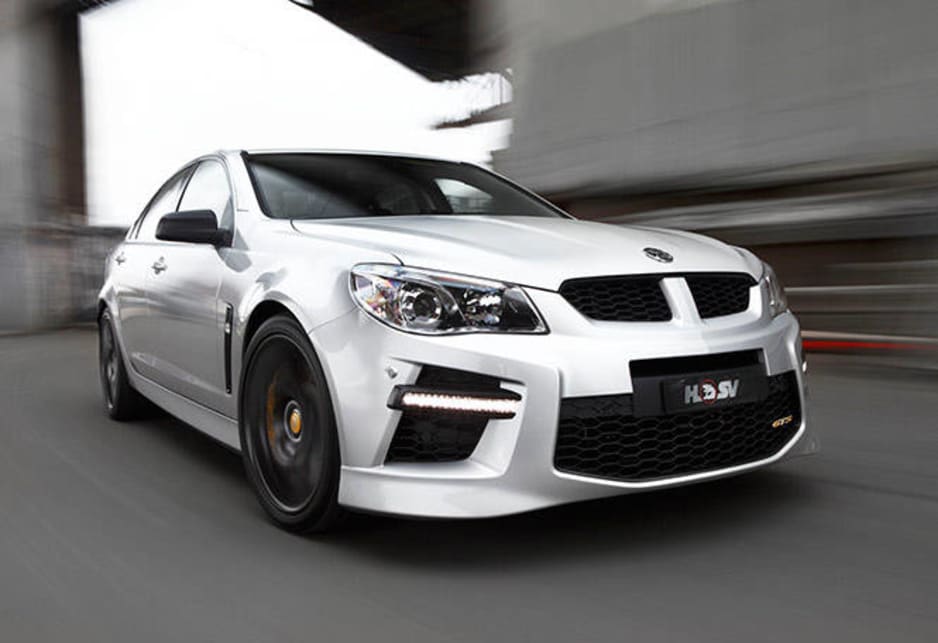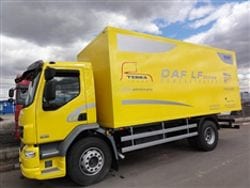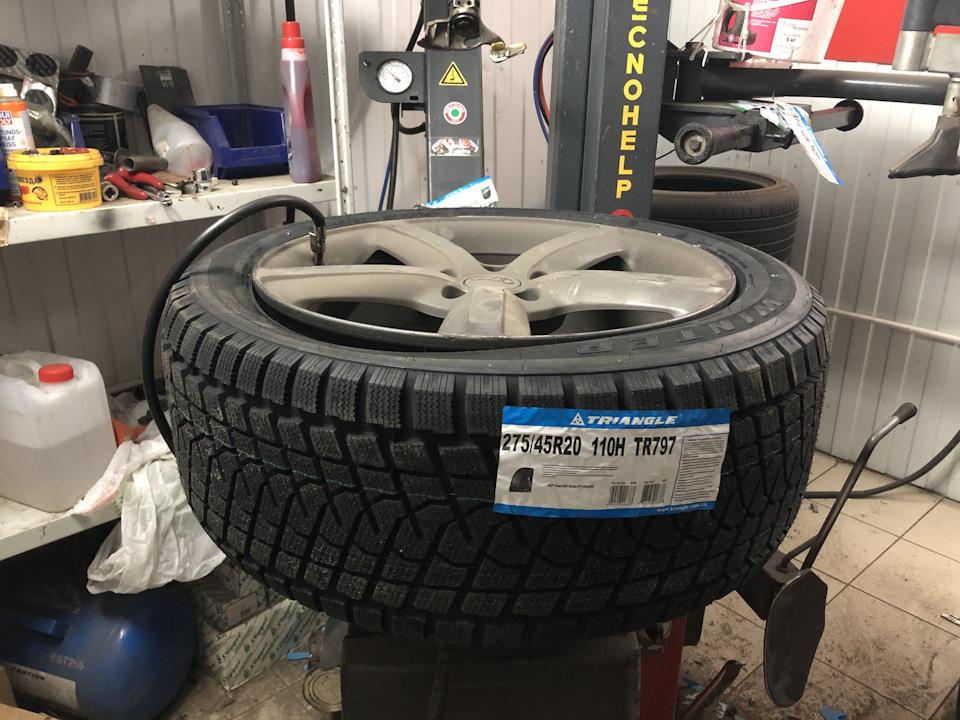
HSV GTS 2013 Review
It's the fastest and most powerful car Australia has ever produced - and probably ever will. will be produce. And we have the first one just minted off the assembly line.
There was really only one place to take the new Holden Special Vehicles GTS: the tall temple of horsepower, Mt. Bathurst Panorama.
We wouldn't be allowed to break free like the late great Peter Brock or so many of today's Holden V8 supercar heroes. After all, Mount Panorama is a public road with a speed limit of 60 km/h when not in use as a race track.
But we didn't complain. Having tried the new HSV GTS in all its glory on Phillip Island a month ago, we have no doubts about the car's ability to kill giants (see sidebar).
Want a short version of this road test? The new HSV GTS is simply amazing. In addition to its blistering acceleration, it has a level of grip never before seen in an Australian sports car, thanks in no small part to a clever electronic solution borrowed from Porsche that keeps the rear of the car glued to the pavement no matter what.
Quick review: Until the facelifted $250,000K Mercedes-Benz E63 AMG arrives on Australian showrooms later this month, the HSV GTS will briefly be the most powerful sedan of its size in the world.
The car, which starts life as a Commodore, borrows an epic supercharged 6.2-liter V8 engine from North American racing versions of the Corvette and Camaro, as well as from Cadillac.
Installing the engine and all other necessary equipment was the biggest engineering collaboration between Holden and performance partner HSV in their 25-year marriage. (The car begins life on the Holden production line in Adelaide before the finishing touches are added at the HSV facility in the Melbourne suburb of Clayton.)
If you're not sure what a supercharger is, all you need to know is that it's the equivalent of a massive pump that forces more air into an already powerful engine. You need a lot of oxygen to burn a lot of gasoline. And when you burn a lot of gasoline, you produce a lot of energy. And the HSV GTS has it in abundance (430kW of power and 740Nm of torque for tech heads - or more than a V8 Supercar race car for the unconverted).
Right now, I'm just trying to navigate Melbourne's rush hour traffic and not scratch the first HSV GTS that leaves Clayton unattended by the company's engineers. The early signs are good: I didn't stall it. The first surprise is that, despite the powerful hardware, the manual transmission and clutch are light and comfortable. Not quite like a Toyota Corolla, but not quite like a Kenworth either.
TECHNOLOGY
I quickly discover a dial in the center of the console (borrowed from a new Corvette) that changes the note of the exhaust as if it were a volume control. One turn of the noise control won't wake up the neighbors, but those next to you will hear extra bass from the silencers.
It's just one part of the new HSV GTS' technology suite. You can personalize your suspension, steering, throttle, and stability control settings with a touch of the touchscreen or by turning a dial. In fact, the new HSV GTS has more computer gadgets than the Nissan GT-R geek icon.
Maps for every race track in Australia are already pre-installed - and there's room for six more if and when they eventually get built (fingers crossed). In reality, however, after you have demonstrated the system to a few comrades, you will rarely delve into its depths.
ON THE ROADS
But that won't stop us. Heading north up the Hume River towards Bathurst, we are effectively following the same path that Brock, Moffat and company took when the racing legends drove their racing cars to Bathurst in the golden era of the sport. Traffic, of course, is a lot worse these days, but the roads are better, albeit littered with speed cameras, it seems, every few miles.
On the northern outskirts of Melbourne, we pass the headquarters of Broadmeadows and the car assembly line of Ford, Holden's formidable rival for the past 65 years. Ford fans are hoping the Blue Oval brand will deliver one last hero car before the Falcon goes out of business in 2016. If that happens, this HSV GTS will be the car they will try to outdo.
Anyone who has traveled the Hume Highway knows that the road is excruciatingly boring. But the new HSV GTS takes away much of the boredom. As with the Holden Calais-V on which it is based, it has a digital display of the vehicle's speed reflected on the windshield within the driver's line of sight.
It also has a forward collision warning if you're about to collide with a vehicle ahead, and a lane departure warning if you're crossing white lines without guidance. Technophobes can disable these systems. But I left the speed display on. It's amazing how relaxing it is not having to look away to check the speedometer every few moments, even when you're on cruise control.
Getting to Bathurst from Melbourne is fairly easy and not as winding as the trip from Sydney through the Blue Mountains. Basically, you turn left a little north of Albury on the New South Wales/Victoria border, zigzag to the outskirts of Wagga Wagga, and then almost straight out into the back of Bathurst.
Unlike Hume, there are no gas stations and fast food chains every half an hour. And the road is not so well kept. Which was both a good thing and a bad thing, because it created some nasty potholes and bumpy corners that made us wonder from time to time if we might need a spare tire that fills space instead of saving it.
Because the HSV needed extra space under the car for the massive heavy-duty differential (roughly the size of an outboard motor) and its cooling equipment, the spare tire is mounted on top of the boot floor instead of underneath. But at least you get a spare. European-style sedans come with an inflation kit and a tow service phone number. Here you will wait for a while.
Finally we reach the Mecca of Australia's motorsports. It's late in the evening and the road workers are busy with another track upgrade ahead of the October Big Race. During a symbolic round trip, we share the mountain pass with hiking coaches, local fitness enthusiasts and fitness enthusiasts on foot, using the steep climb to get their hearts racing.
However, no matter how many times I've been here, Mount Panorama never ceases to amaze me. The steep slope, seemingly dropping corners, and sheer cliffs mean it wouldn't meet modern regulations if it were built from scratch today. However, it survives because it is part of history - and thanks to countless costly upgrades. Unfortunately, the homegrown Holden Commodore will soon find its way into the history books. When the Holden Commodore goes out of business in 2016, it will be replaced by a front-wheel-drive sedan that may or may not be made in Australia.
This makes the new HSV GTS a fitting exclamation mark for the Australian automotive industry and a future collectible. It's the result of all Australian automotive know-how in one car (albeit with a little help from a North American supercharged V8 engine). However, no matter how you look at it, there will never be such a domestic car again. And this is a tragedy.
ON THE ROAD
The new HSV GTS is great on the road, but you need a race track to unleash its full potential. Luckily, HSV hired one for the day. HSV claims the new GTS can sprint from 0 to 100 km/h in 4.4 seconds with an automatic transmission (yes, it's faster than a manual transmission, but it's faster with a manual transmission when you're already on the move). The best time from 0 to 100 we could get from the manual was a sequence of easily achievable 4.7 second runs. In launch control mode, it worked ad nauseam in 4.8 seconds.
However, acceleration is only one part of the story. Handling has gone up a notch. Finally, magnetically controlled particles in the suspension promise comfort and handling. The GTS now handles bumps better than the HSV Clubsport.
Best of all, you can feel the computer magic applying the rear brakes to help prevent the rear end from slipping. Electronic torque vectoring is the same type of technical chatter that Porsche uses. At first you think that your driving skills have improved. Then comes reality.
The highlight for me, aside from the obvious adrenaline rush, is the new brake package. These are the largest brakes ever fitted to an Australian production car. And they are great. They have a crisp feel that is typical of sports cars rather than 1850kg sedans. There is no doubt that the new GTS is the most complete package HSV or Holden has ever created. We don't give out such praise lightly, but the team behind this machine should take a bow.
HSV GTS
Cost: $92,990 plus travel expenses
Engine: 430-litre supercharged V740 petrol, 6.2 kW/8 Nm
Transmission: six-speed manual or six-speed automatic ($2500 option)
The weight: 1881 kg (manual), 1892.5 kg (auto)
Economy: TBA
Safety: six airbags, five-star ANCAP rating
from 0 to 100 km / h: 4.4 seconds (claimed)
Service Intervals: 15,000 km or 9 months
Spare wheel: Full size (above trunk floor)

